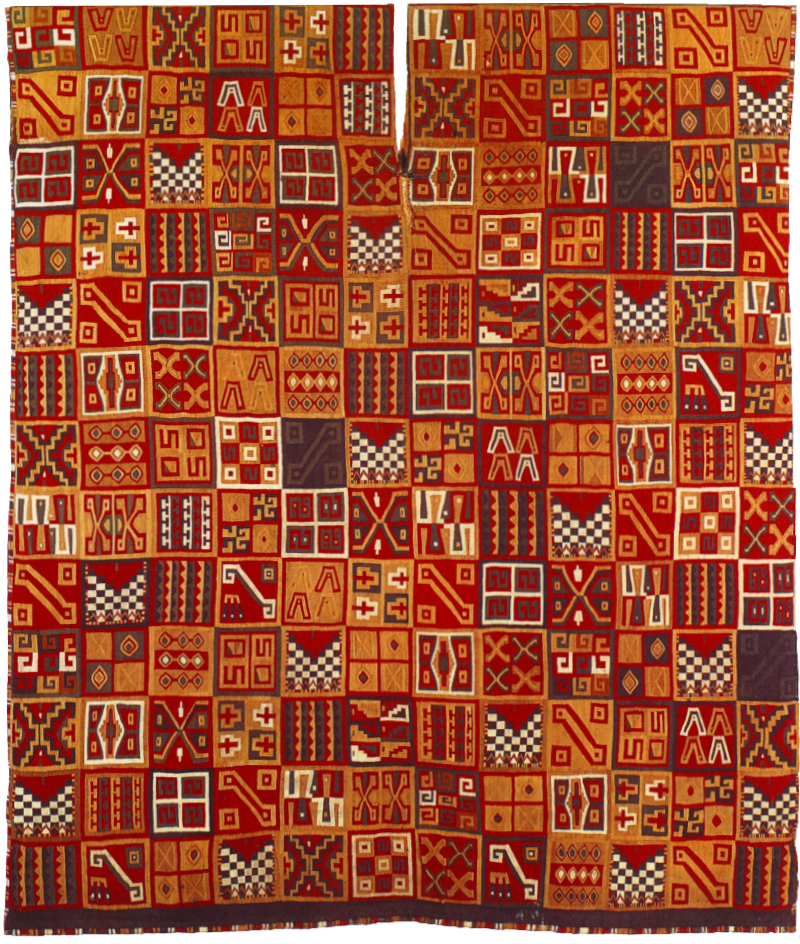Latin America
Related: About this forumWHAT LIFE WAS LIKE FOR WOMEN IN THE INCA EMPIRE

The Incan empire quickly grew during the 16th century CE to encompass nearly the entire western coast of South America, from the southern area of modern-day Chile and Argentina in the south, up through Bolivia, all the way to the western tip of Colombia, per Ancient. The empire's heart was located in Peru in the capitol of Cuzco, and found ways to thrive in the peaks of the Andes mountains, through ingenuous terraced cities and mountaintop architecture such as that found in Machu Picchu. Prior to the fall of the empire in 1633 CE vis-a-vis the capture of king Atahualpa by the Spanish conquistador Pizarro (and his subsequent execution despite having his ransom paid), the Incan empire followed an hierarchical, prescribed lifestyle. Villages and tribes were scooped up, integrated into the empire, and taxes were paid in the form of foodstuffs, textiles, metals, etc., through a regimented, tiered system of 80 governors.
Within this highly prescribed governmental structure, women often played the role of local nobles called kurakas. Small municipalities were referred to as ayllu, a collection of individual households, which were ruled by kurakas, through whom tribute flowed. This kind of stacked hierarchy flowed all the way up to the king, for whom particularly talented weavers, such as those of the Chan Chan or Titicaca region, crafted their wares (within uniform, allowable Incan style guidelines). Some of these women lived in temples under vows of chastity, aiding with religious rituals much like Catholic nuns, all within the watchful eyes of a local matron dubbed Mama Cuna. Many of these women became either concubines for royalty, or sacrifices for the gods, as described in Britannica.
HUNTERS, GATHERERS, MOTHERS, DAUGHTERS
For those women in the Incan empire confined by neither gods nor aristocracy, the family sphere defined nearly their entire lives. Puberty was the great demarcation of Incan life, and once a woman reached such an age, she had a feast in her honor and was given a name to her by her eldest uncle, as described in Ancient. It's interesting to note that Incans had no surnames, only first names that operated more or less like nicknames, as the entire civilization regarded itself as one giant family having originated with the creator god Viracocha arriving in Lake Titicaca from the Pacific Ocean
Predictably, women were expected to marry in their teens, although for non-nobles the choice was largely up to them. They simply consulted with their parents, came to a mutual agreement, and the marriage was more or less done (dependent on a gift of coca leaves). Women would move in with their husbands and immediately begin working at his family's house, while half of the property she gained from the marriage went back to the local ayllu. Birth control wasn't practiced in Incan society, neither was infanticide, and neither sex was discriminated against at birth.
Read More: https://www.grunge.com/228082/what-life-was-like-for-women-in-the-inca-empire/?utm_campaign=clip
Also posted in Anthropology:
https://www.democraticunderground.com/12295898
Judi Lynn
(160,525 posts)who invaded, murdered, enslaved them, stole their worlds are simply grotesque.
Don't know why they bothered, actually. The paintings done of indigenous people in North America are horrific, too.
The paintings actually give you a snapshot of the contents of the "artists'" brains. Looks pretty stupid in there, doesn't it?

Atahualpa

Hey, it's an Inca princess! S'alright!

Sherman A1
(38,958 posts)Thanks for posting.![]()
Judi Lynn
(160,525 posts)So skilled, so intelligent, it's easy to see. When we learn more we will discover how idiotic our imperious, racist silly historians have been!
![]()
Sherman A1
(38,958 posts)We have be ill served in many cases by those who have scribbled down our history.
Ferrets are Cool
(21,106 posts)the most interesting information. They were so advanced.
Judi Lynn
(160,525 posts)by Mark Cartwright
published on 11 March 2016

The art of the Inca civilization of Peru (c. 1425-1532 CE) produced some of the finest works ever crafted in the ancient Americas. Inca art is best seen in highly polished metalwork, ceramics, and, above all, textiles, with the last being considered the most prestigious by the Incas themselves. Designs often use geometrical shapes, are standardized, and technically accomplished. The European invaders destroyed much of Inca art either for sheer monetary gain or religious reasons but enough examples survive as testimony to the magnificent range and skills of Inca artists.
Influences & Designs
Although influenced by the art and techniques of the earlier Chimu civilization, the Incas did create their own distinctive style which was an instantly recognisable symbol of imperial dominance across their massive empire. The Incas would go on to produce textiles, ceramics, and metal sculpture technically superior to any previous Andean culture, and this despite stiff competition from such masters of metalwork as the craftsmen of the Moche civilization.
Just as the Incas imposed a political dominance over their conquered subjects, so too with art, they imposed standard Inca forms and designs. The art itself did not suffer as a consequence, though. As art historian Rebecca Stone puts it,
Standardisation, though powerfully unifying, did not necessarily lower the quality of art; technically Inca tapestry, large-scale ceramic vessels, mortar-less masonry, and miniature metal sculptures are unsurpassed. (Art of the Andes, 194)
The checkerboard stands out as a very popular design. One of the reasons for the repetition of designs was that pottery and textiles were often produced for the state as a tax, and so artworks were representative of specific communities and their cultural heritage. Just as today coins and stamps reflect a nation's history, so too, Andean artwork offered recognisable motifs which either represented the specific communities making them or the imposed designs of the ruling Inca class ordering them. The Incas did, though, allow local traditions to maintain their preferred colours and proportions. In addition, gifted artists such as those from Chan Chan or the Titicaca area and women particularly skilled at weaving were brought to Cuzco so that they could produce beautiful things for the Inca rulers.
More:
https://www.ancient.eu/Inca_Art/